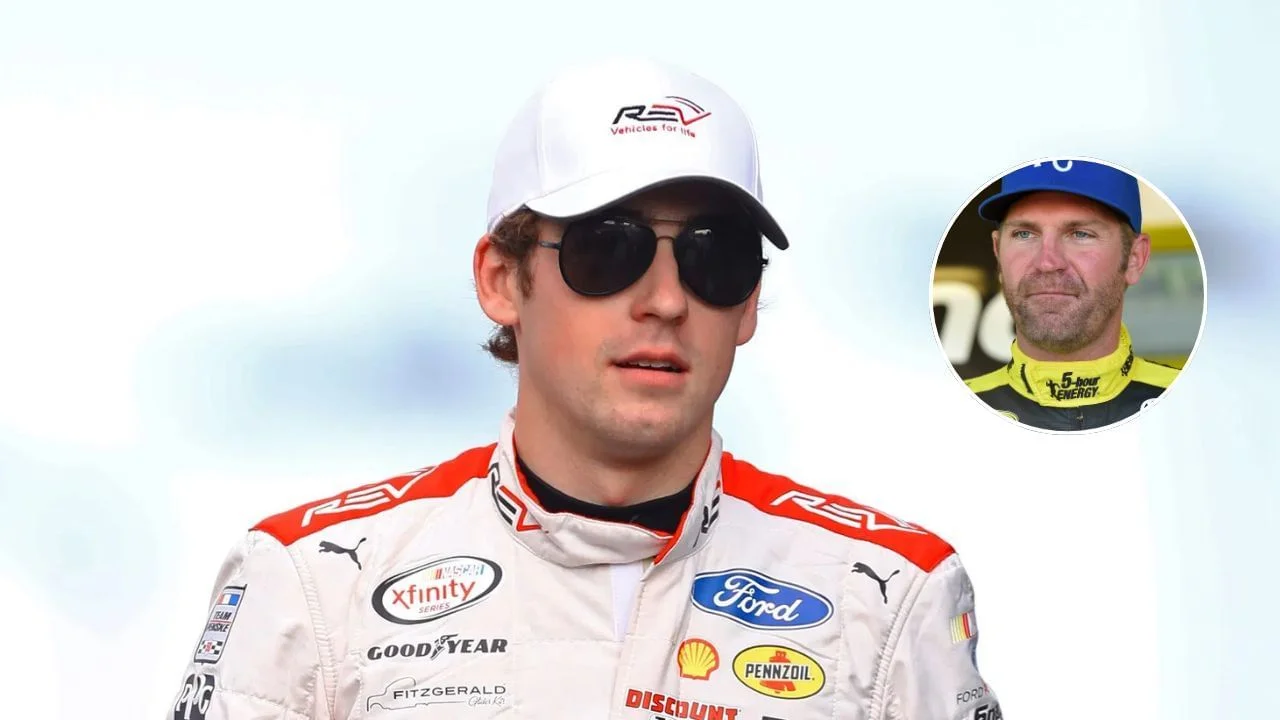Ryan Blaney addressed a notable Clint Bowyer conflict with Ryan Blaney during his early NASCAR career, sharing how he managed the incident through a text message. The episode occurred when Blaney was a young driver balancing several series, highlighting his preference for direct conflict resolution and the challenges when in-person discussions are not possible.
Early NASCAR Career and the Bowyer Incident
In 2015, Ryan Blaney juggled part-time duties across NASCAR‘s principal series, driving the No. 21 ford/”>Ford for Wood Brothers Racing in sixteen Cup races. That season, he notched top-10 finishes, securing fourth place at Talladega and seventh at Kansas. He also earned two Xfinity Series victories under Team Penske, demonstrating his growing reputation in the sport.
That year, Blaney discussed his approach to post-race disputes during an interview with USA TODAY. Known for valuing immediate resolution, he described his preferred methods for addressing tensions with other drivers. His perspective became especially relevant after an altercation with Clint Bowyer at New Hampshire Motor Speedway, where an on-track clash saw Blaney push Bowyer into the wall.
“I’d like to try to reach out to them as quickly as possible, whether it’s in person or a call or a text. You’d rather do it in person, but it’s hard to wait until the next week if you don’t see them,” Ryan Blaney said.
Blaney explained that he would not cross paths with Bowyer soon after the New Hampshire incident, as he wasn’t racing in the Cup Series for two weeks following their contact. The track’s poor reception made a phone call unreliable, leaving text messaging as his sole option to address the misunderstanding with Bowyer.
“I wasn’t racing Cup for the next two weeks, so I probably wasn’t going to see him [Bowyer]. I didn’t want to call him, because the service was terrible in New Hampshire. I thought it would be worse to call him and drop the call in the middle of our talk than to send him a text. Texting somebody is kind of the last thing I want to do, but I had to do it in that situation,” he added.
This approach reflected Blaney’s discomfort with resolving matters through texting, yet he prioritized communication to prevent lingering issues, especially regarding the Clint Bowyer conflict with Ryan Blaney.
Blaney’s Approach to Conflict and On-Track Intensity
Blaney has built a reputation as a driver who refrains from retaliating on track, preferring discussion and resolution over escalation. His temperament is often demonstrated during high-pressure moments, such as his fiery radio communications during races. Despite his outbursts, his actions rarely translate to vengeance against competitors.
For example, in the 2024 Brickyard 400, Blaney voiced his frustration with Kyle Larson over a restart decision, believing it hurt his outcome. Similarly, at Atlanta, Blaney expressed annoyance by calling Carson Hocevar a “moron” on the radio after a late-stage incident, though Hocevar did not initially acknowledge the contact. These situations exemplify Blaney’s emotional intensity but reinforce his tendency to resolve disputes through conversation rather than retribution.
Communication and Moving Beyond Disputes
Blaney’s conflict resolution extends to dealings with teammates and adversaries alike. Over the years, he has spoken about inevitable clashes in racing, whether with longtime competitors like Joey Logano and Austin Dillon or with rivals. He maintains that open dialogue is critical, regardless of relationships within the sport.
“No matter if you’re a teammate, worst enemies, best friends, you’re gonna get into it with everybody, intentional or not, and those things just happen. … Joey and I have had a couple run-ins over the years, me and Austin, and you get over that stuff. You talk about it. You get over it,” Ryan Blaney said (via NASCAR.com).
Although his radio comments sometimes spark criticism from fans, Blaney’s consistent practice has been to settle matters off the track, underscoring a philosophy of direct communication and moving forward. This mindset has informed his responses to numerous controversies and continues to shape how he navigates the ups and downs of NASCAR competition.
The Broader Impact on NASCAR Sportsmanship
By sharing his experience with the Clint Bowyer conflict with Ryan Blaney and discussing his broader approach to racing disagreements, Blaney offers a window into the emotional intensity required in NASCAR. His method of prioritizing dialogue over retaliation could encourage other drivers to adopt more direct and constructive ways of handling disputes. As competitive pressures remain high, Blaney’s example may shape future interactions within the intensely scrutinized world of professional racing.
